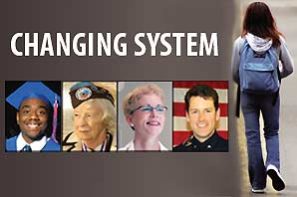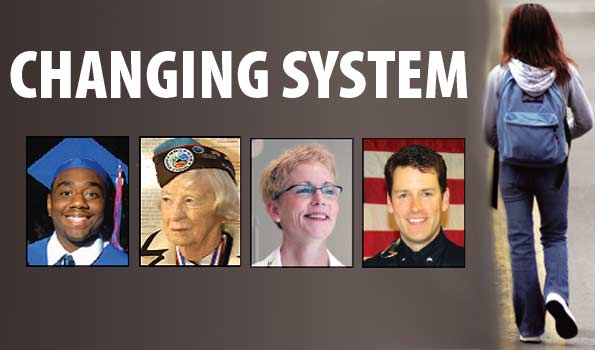Priority registration would be based mainly on merit
Johana Vasquez works during the day and attends classes at night. It’s the only way, she says, to finish her transfer requirements.
With a rash of course cuts and ballooning class sizes, Vasquez wasn’t able to get the night classes she needs to manage her schedule.
“I pretty much got stuck with the classes I could get,” Vasquez said of the core English class she wasn’t able to add. Last month, state education leaders moved forward with a new policy that streamlines community college degrees while easing transfer requirements.
A large part of the new policy comes in the form of priority registration rewarding students who have an academic plan for graduation either with a degree or transfer within two years.
Graduation, certification and transfer rates are expected to increase because of the plan, said former California Community College Chancellor Jack Scott.
The plan comes in response to the statewide drop in college enrollment and the elimination of about 24 percent of course offerings.
It was hatched when the California Community College Board of Governors created the Student Success Task Force to seek ways of recouping lost revenue from budget cuts.
Recommendations include changing California’s two-year system while capping units.
The move marks a change in the mission of community colleges that once offered low-cost education while becoming a place for lifelong learning. Historically, students could accumulate a large number of units and still obtain priority registration.
But because of state budget cuts, college districts have been forced to limit course offerings, shutting out nearly half a million students, according to a report by California Community College Chancellor’s office.
“More resources would be devoted to students because of this change, guiding and supporting them to their educational goals,” Martha Vargas, counseling coordinator said.
Students would need to choose their program within three semesters or priority would be withdrawn. Goal-oriented students could begin speeding their way through the system in Fall 2014.
Sociology major Musset Calvillo said the improvements are a matter of bad timing. In her second year at SAC, Calvillo says she needs one more semester to get the classes she needs to transfer.
“I do think it’s great for freshmen just starting out,” Calvillo said.
BY THE NUMBERS:
- 84% — of UC and CSU graduates get their start in junior colleges.
- 50% — of veterans claim their benefits by attending colleges such as SAC.
- 75% — of nurses attain their degrees through a two year program.
- 80% — of emergency workers earn their credentials through community college.
- In Photos: Fiestas Patrias 2025 - September 25, 2025
- The two-party system is failing us. - October 19, 2024
- Read our Fall 2023 Print: Vol. 100 No. 1 - October 23, 2023












